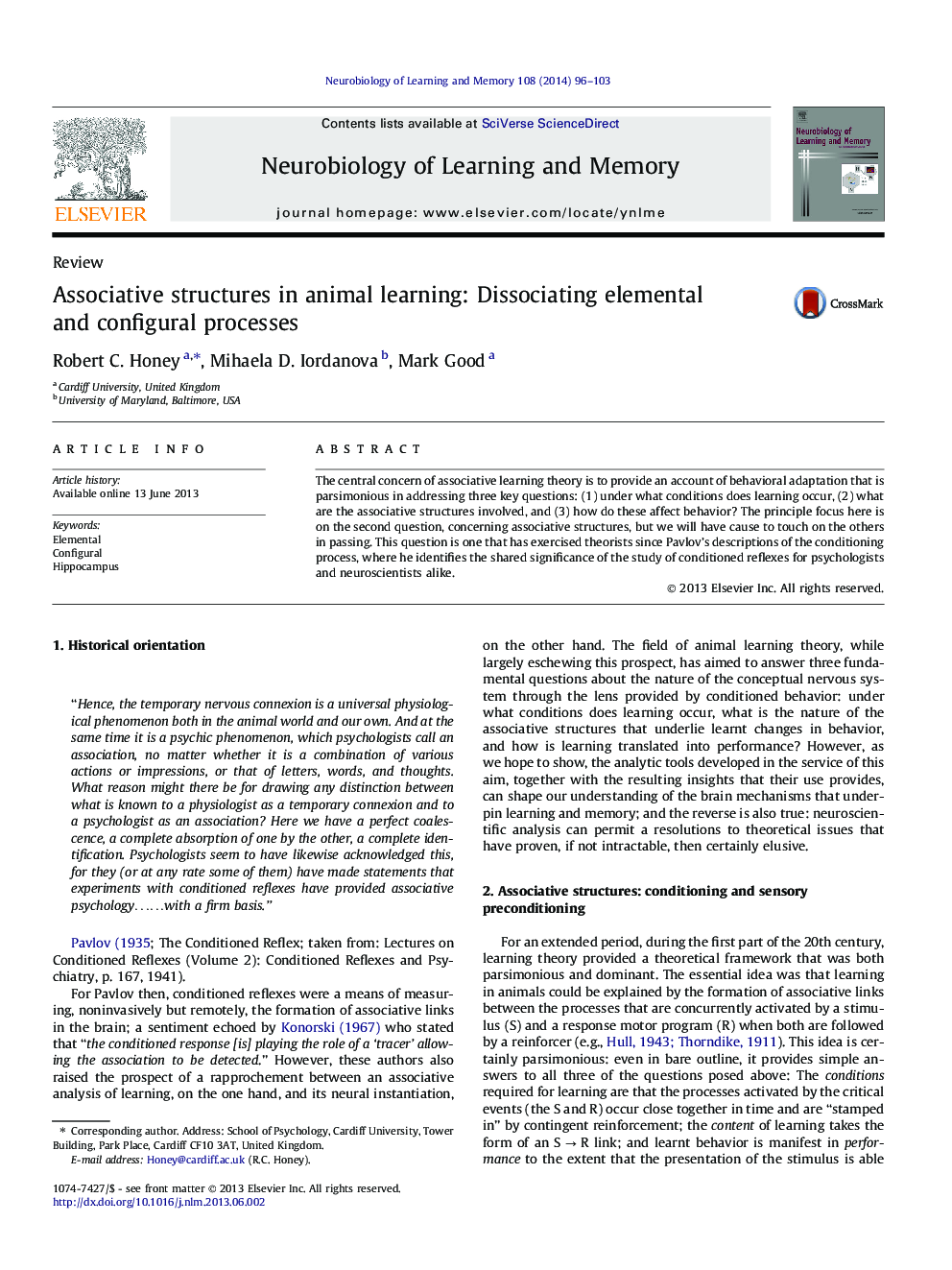| Article ID | Journal | Published Year | Pages | File Type |
|---|---|---|---|---|
| 936566 | Neurobiology of Learning and Memory | 2014 | 8 Pages |
•The contribution of elemental and configural processes to learning is difficult to determine with behavioral observations alone.•Neuroscientific manipulations reveal clear dissociations between these processes when rats learn about episodic information.•These dissociations inform theoretical analyses of the nature of the interaction between elemental and configural processes.
The central concern of associative learning theory is to provide an account of behavioral adaptation that is parsimonious in addressing three key questions: (1) under what conditions does learning occur, (2) what are the associative structures involved, and (3) how do these affect behavior? The principle focus here is on the second question, concerning associative structures, but we will have cause to touch on the others in passing. This question is one that has exercised theorists since Pavlov’s descriptions of the conditioning process, where he identifies the shared significance of the study of conditioned reflexes for psychologists and neuroscientists alike.
